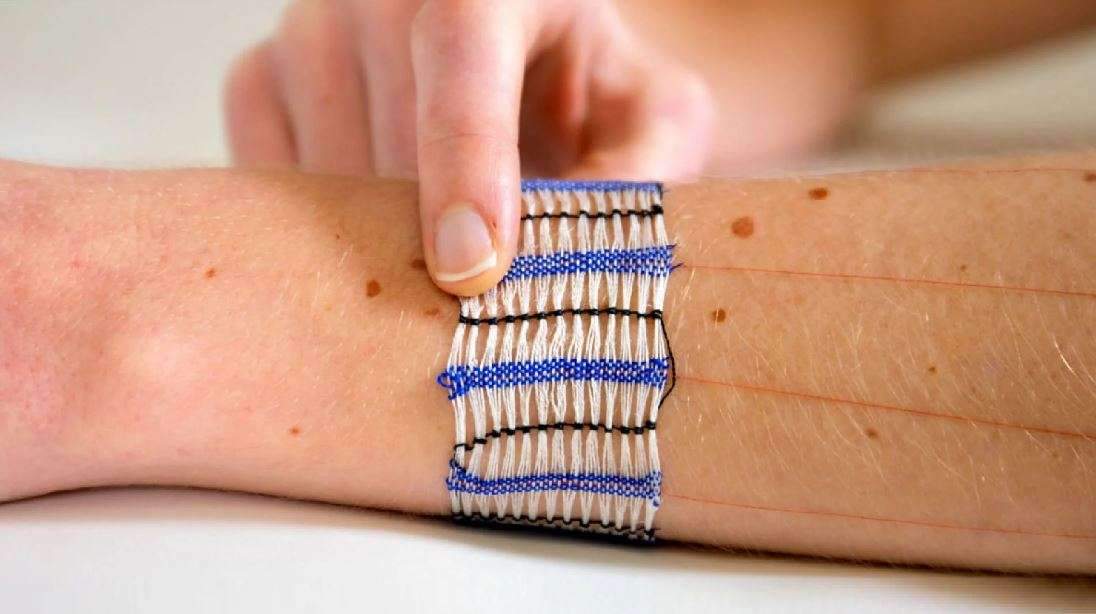WovenSkin’s soft wearable forms enhance the usefulness of conventional textiles by adding interactive components.
The fields of textile arts and human-computer interaction might not initially seem to complement one another. Engineers who prioritize efficiency and usability have generally been responsible for developing human-computer interfaces. They might disregard cultural history and personal expression while rejecting conventional forms of materialism. WovenSkin follows a distinct methodology.
WovenSkin – Hybrid Body Lab’s creators
A research facility at Cornell University in Ithaca, New York, is called Hybrid Body Lab. The Lab’s research is concentrated on the development of on-body electronic interfaces that use components and techniques that are influenced by other cultures. Wearable computing, digital fabrication, body art, and human-computer interaction are all areas of research.
Cindy Hsin-Liu Kao, the lab’s director, and founder continues her research in the lab. Dr. Kao studied for her Ph.D. at the MIT Media Lab where she studied hybrid body craft. She is currently an associate professor of design and environmental analysis at Cornell.
The placement of interactive and responsive objects directly on the skin has been addressed in previous projects using a variety of methodologies. Cosmetic powders called EarthTones react to environmental pollutants by changing color. Using a technique called DuoSkin, wearers can operate their mobile devices using skin ornaments that resemble jewelry. They are equipped to recognize touch input, display output, and conduct wireless NFC connections.
Wide-ranging presentations and exhibitions of Dr. Kao’s work have taken place, including ones at the Pompidou Center and Ars Electronica. 2017 saw the awarding of an A’Design Award to DuoSkin.
The members of the WovenSkin research team include Cindy Hsin-Liu Kao, Margaret Dunne, Ryosuke Onese, Andrea Ling, Amanda Denham, and Ruojia Sun.
Materials & Methods of WovenSkin
A fabrication technique called WovenSkin mixes conventional yarns with conductive fibers, threads, and wires. Various traditional looms, including handlooms, table looms, and Jacquard looms, weave the materials together.
Contrary to other wearable technology manufacturing techniques like laser cutting and 3D printing, the structural form of weaving has some technical advantages. Woven textiles can contain novel materials, connect numerous elements across layers, and enable several functionalities in a single device.
The researchers determined that skin-friendly Polyvinyl alcohol (PVA) was the most effective way to affix the pieces of woven cloth to the skin. There is a thin layer of PVA covering the finished woven device. To dissolve the PVA and glue the textile to the skin, the device is wet with a sponge before being applied to the skin.
Moreover, there are now four case studies that illustrate WovenSkin’s functional capabilities. These effectively demonstrate bending response, capacitive touch input, pressure sensor input with haptic feedback, and 3-dimensional communication between layers. To support diverse functionalities, the gadgets also contain thermochromatic yarn, optical fibers, shape memory alloy, and LEDs.

Using tradition as inspiration for style and aesthetics
WovenSkin draws on the extensive and diverse cultural traditions of textile production in terms of aesthetics. Weaving textiles serve both practical and aesthetic purposes. In contrast to wearable electronics gadgets’ more popular “technology aesthetic,” it is also more human and has a personal touch.
Furthermore, four case studies created by WovenSkin showcase the process’s aesthetic potential. It is possible to create colorful, aesthetically pleasing devices that also have intricate patterns and rich textures. A different approach that broadens WovenSkin’s aesthetic options demonstrates through the usage of recycled plastic bags as a substitute fiber source.
The devices’ woven construction also enables the creation of space within the designs. Wearers can expose skin underneath the accessory. Devices don’t have to be huge, opaque blocks of technology.
A fresh blend of intimacy and proximity
There is a variety of WovenSkin prototypes that highlight the creative parts of the technique. To cover the heart, one weaver made a patterned textile object. When the wearer touches it, it sends a message to a loved one.
Another is an on-skin safety blanket made of fringed fabric that, when touched, is said to soothe and reassure the wearer. The idea for a third prototype, which you wear on the back, came from a video game.
Furthermore, these prototypes increase the level of intimacy between the body and the textiles. WovenSkin was a brand-new hybrid type of body art and textiles.
Design Memorabilia: Research in Design
The Hybrid Body Lab kept making research through design. It is the process of designing that explicitly produces new answers and new information.
Moreover, they investigated the WovenSkin procedure in exploratory workshop research. Textile professionals had the chance to design a unique gadget and offer comments on how people perceived WovenSkin. Also, the workshop’s prototypes produced fresh insights into how we modify weaving for on-skin interfaces.
Dr. Kao is now working with a knitter and senior lecturer in fiber science and apparel design (FSAD), Melissa Conroy, following the successful integration of the textile artists. Finally, they have funds to investigate and create knitted braces that are responsive to help with injury healing.

Read more on Archup:
5 Solarium Ideas to Steal From Zooey Deschanel and Jonathan Scott
Cascading glass wraps mass timber office building in Kirkland by LMN Architects


 العربية
العربية